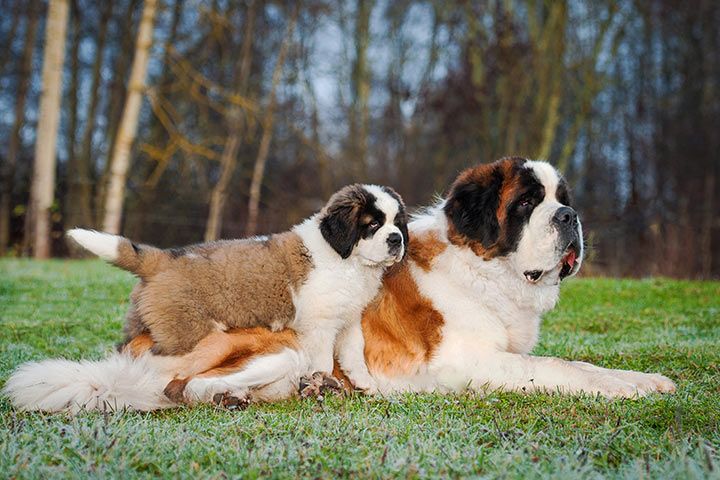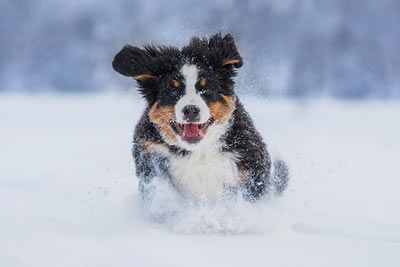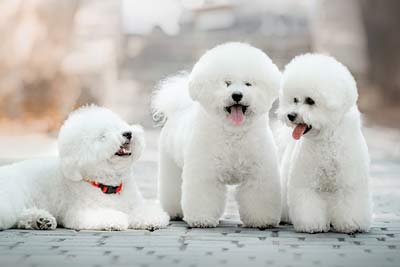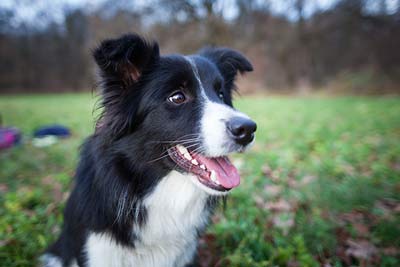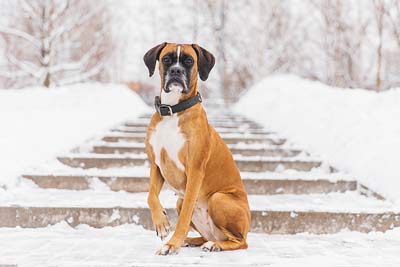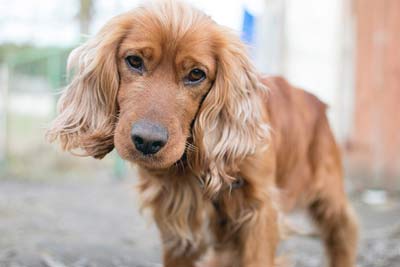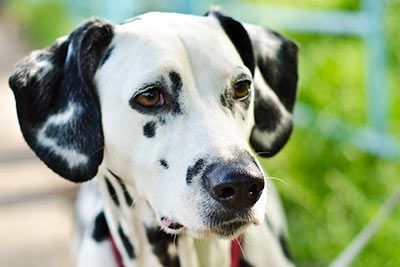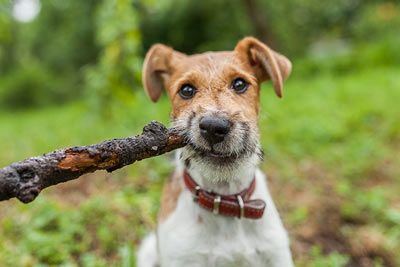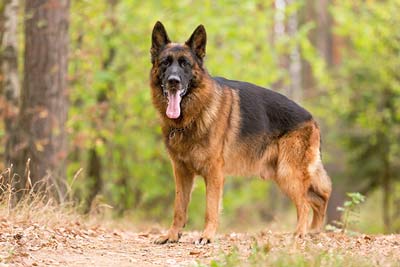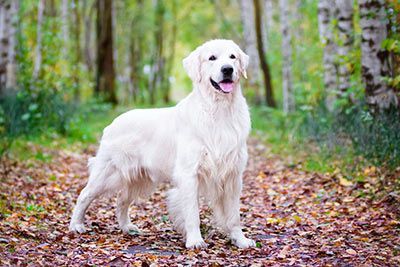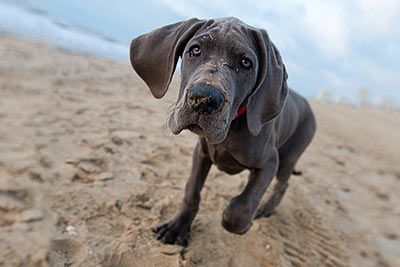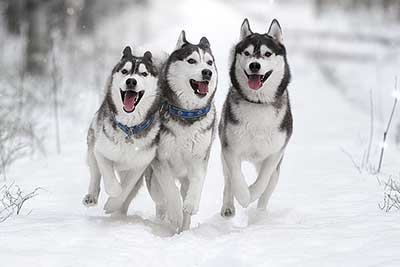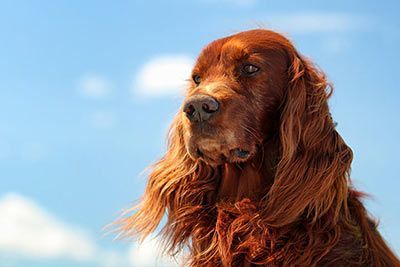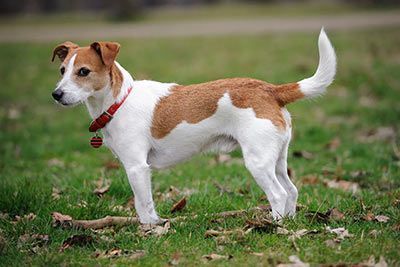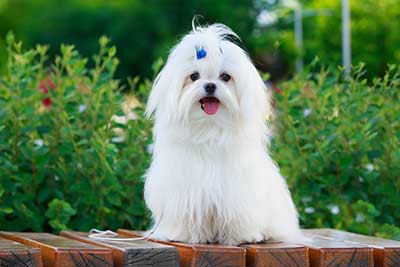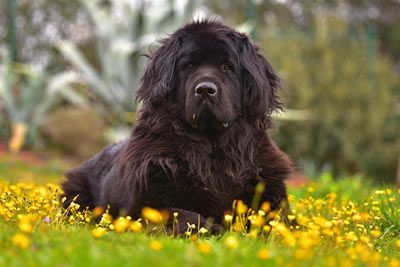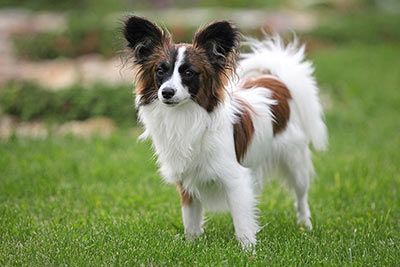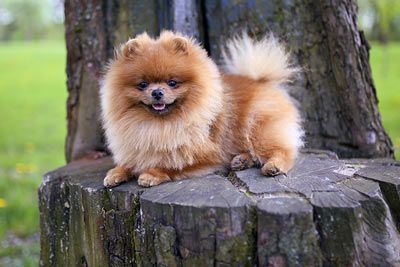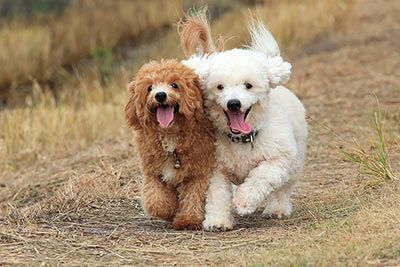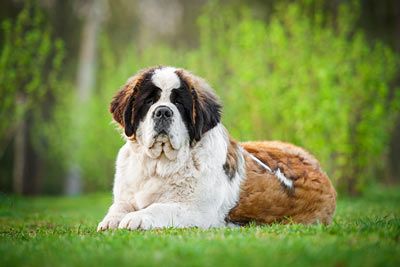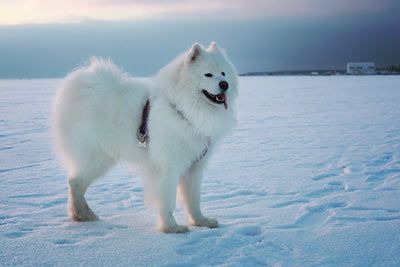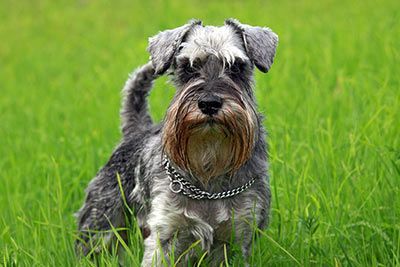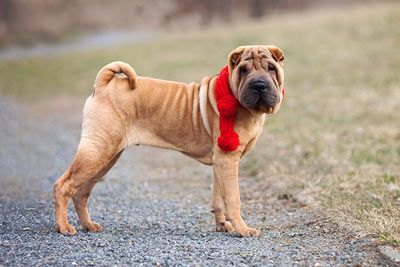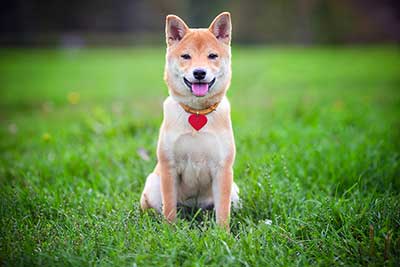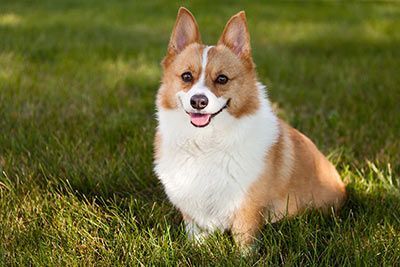Saint Bernard
Saint Bernard Dog Breed Information
| Size | 25-36 inch (65-90 cm) |
| Weight | 132-200 lbs (60-90 kg) |
| Origin | Switzerland |
| Color | Red, white, brown; multi-colored |
| Lifespan | 8-10 years |
| Suitable as | Companion dogs |
| Personality | Friendly, caring, patient, loving, even-tempered |
| Exercise | |
| Drooling | |
| Shedding | |
| Fur care |
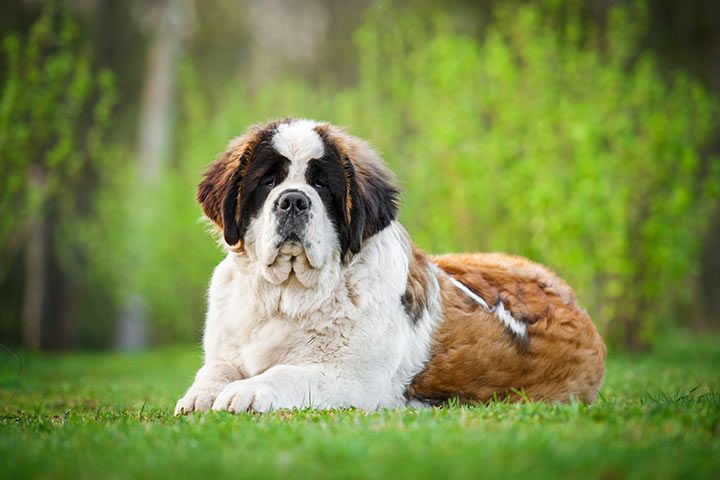
Breed Characteristics
Saint Bernards are great family dogs because they’re so gentle and patient. However, they should be trained well from a young age, as they get very big so should be obedient. They’re intelligent and willing but sometimes a little stubborn. In former times they were used as rescue dogs. Today they appreciate staying at home and taking a nap in a cozy spot. Although they are large, they are very quiet and enjoy lazing around. Nevertheless, the Saint Bernard needs a daily walk.
Pros and Cons
Pros
- Good-natured, relaxed temperament
- Very loyal
- Medium energy level
Cons
- Not a beginner dog
- Can be stubborn
- Can be over-protective
- Sheds a lot
- Drools a lot
- Doesn't deal well with hot weather
- Needs lots of space (house, car)
- Needs lots of grooming
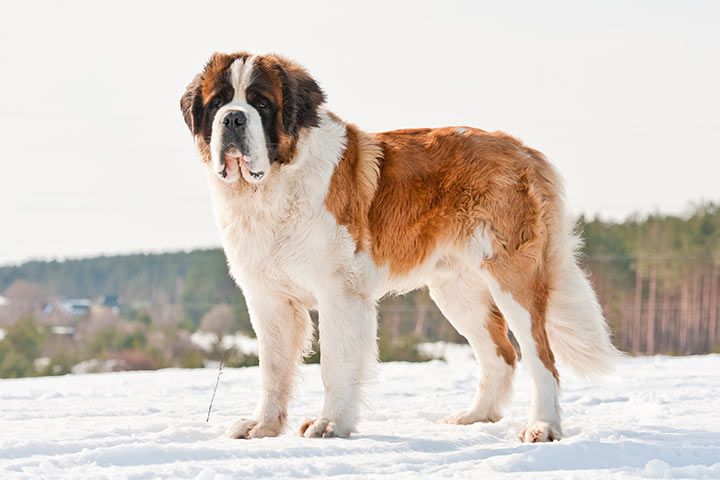
Exercise Needs
It is not very playful, but if you make yourself comfortable on the sofa to watch a movie, for example, it is the perfect dog to cuddle with. The dog would be completely unsuitable as a company while jogging. This would be too much stress for this large and heavy dog. Things look a bit different in the winter. In cold temperatures, he seems to get a real boost of energy and loves to romp around in the snow.
Top Activities
Go for a Walk, Obedience, Tracking, Trails, Hidden Objects Games
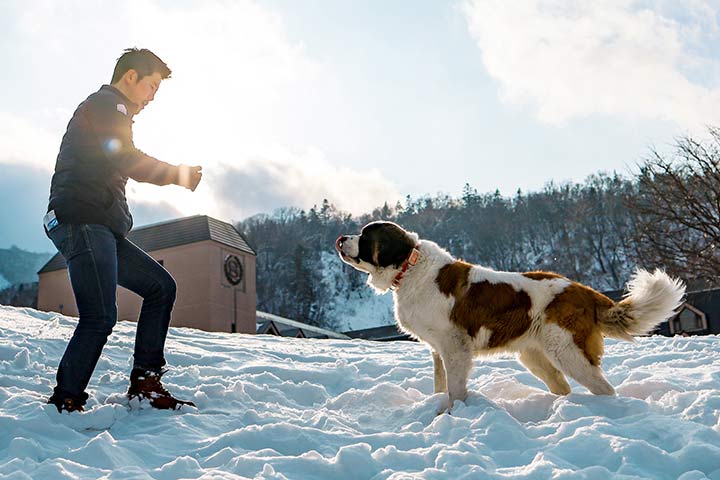
Drooling
What you have to accept inside your home, however, are the traces of his drooling. Drooling is virtually the "basic equipment" of the Saint Bernard and can not be turned off. He also carries more dirt inside than a small Chihuahua - especially when the Saint Bernard has a long coat. As much dirt as the Saint Bernard produces, so much love and kindness he has to give as a gift!
Health and Care
The coat of a Saint Bernard - especially if it is long - should be maintained every two to three days. The summer is not his favorite season, because he sweats quite easily and therefore always needs plenty of fresh water.
Appearance
The coat of a Saint Bernard can be red, reddish brown, tawny or brown and always has white spots - especially on the chest, neck, nose, paws and tail. It can be short or long, although today only the long-haired Saint Bernard is standard. Their forelegs are feathered. Thighs and tail are quite bushy.
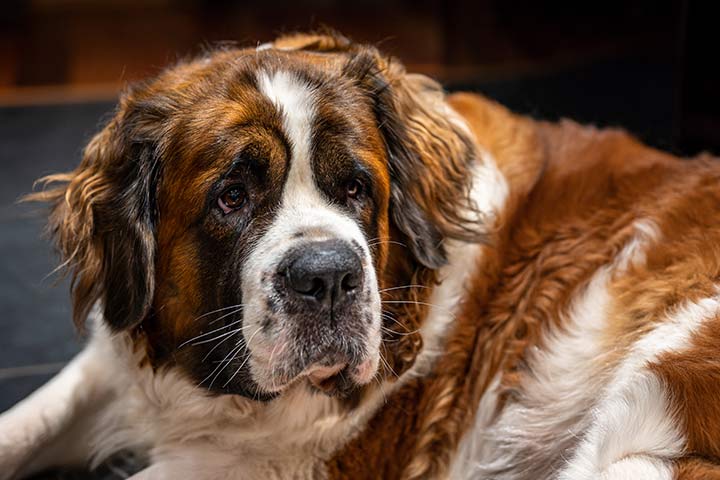
History and Origin
In the year 1050 high up in the Swiss mountains, at an altitude of 8,100 feet (2,469 meters), a hostel was founded and its name was the "hospice on the Great St. Bernard". Here, especially from the 19th century on, the Saint Bernards were bred.
We know these dogs as big, heavy animals with medium length fur. In the past, however, they were much lighter and smaller, and therefore better adapted to the difficult life in the mountains. They assisted the travelers in dangerous situations as rescue dogs. Breeding has made the dogs very tall and heavy nowadays. This is why it cannot longer be used as a rescue dog, but is valued as a peaceful home and companion dog.
Where Does the Name Come From?
The mountain pass that gave its name to the Saint Bernard was the "Great St. Bernard".
Fun Facts
The most famous Saint Bernard is probably "Barry, the avalanche dog", which is said to have saved the lives of 40 people. We have an extra article about his adventures!
Comparable Breeds
